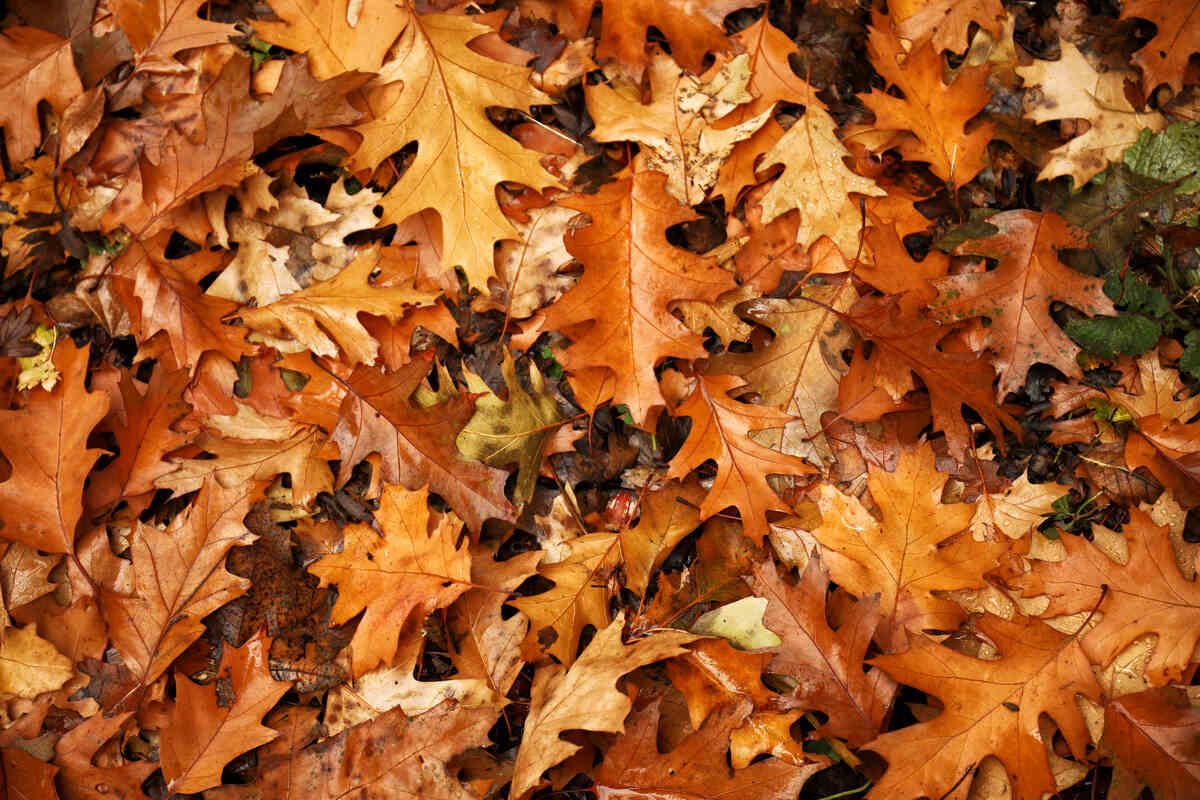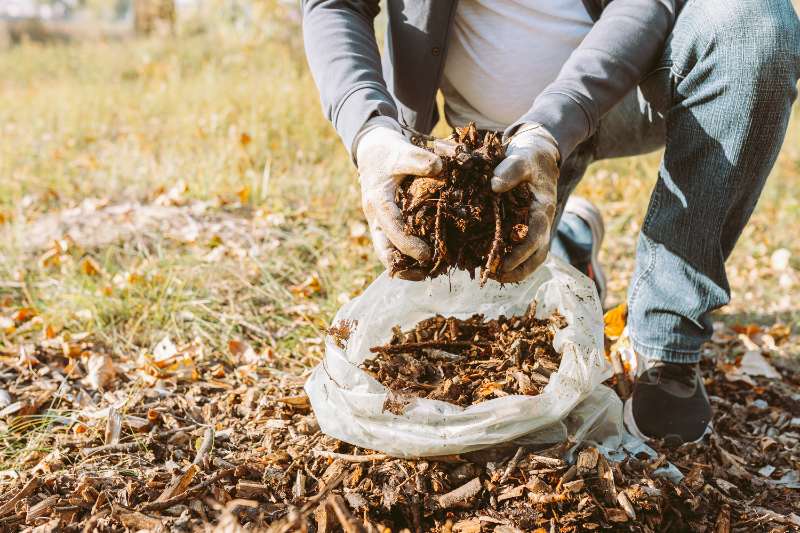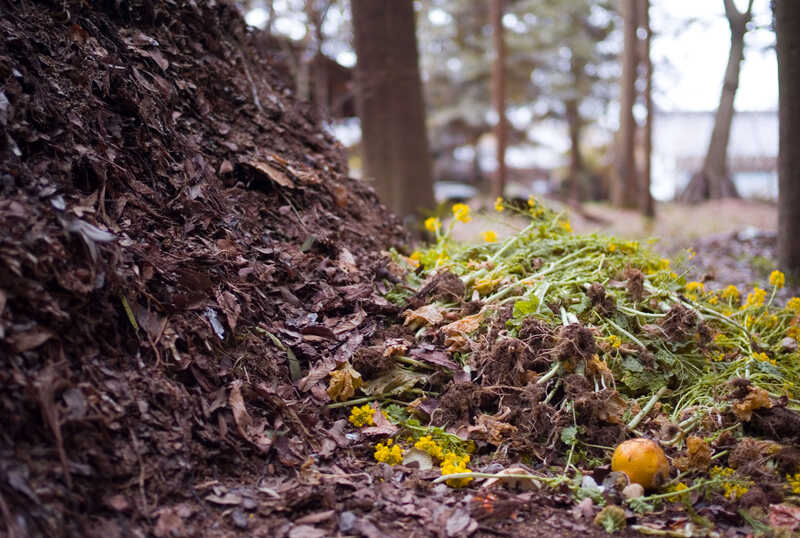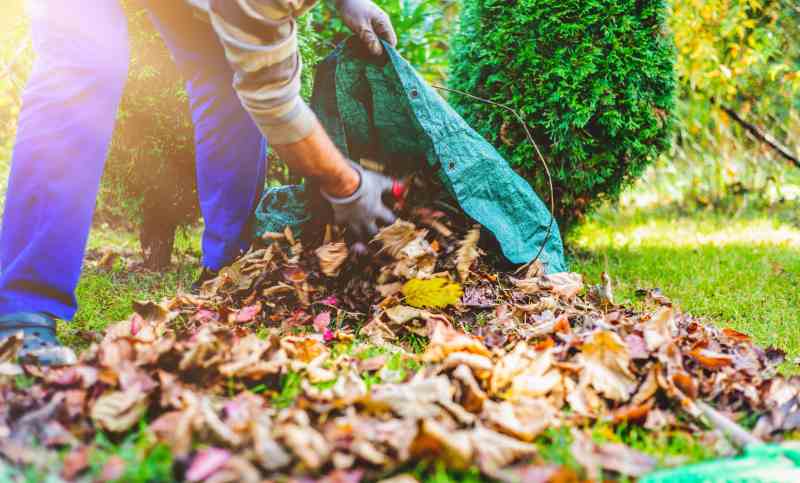
Every fall, many homeowners face the same dilemma: what to do with fallen leaves. You can rake, mulch, or compost the leaves. You can also turn them into leaf mold or decorative crafts.
Fall foliage is truly Instagram-worthy. But once the leaves fall on the ground, your yard can easily turn from rustic to chaotic. Still, it would be a waste to throw the leaves — they’re free organic material you can use for your lawn and garden.
1. Let the Leaves Decompose
Instead of raking the leaves, letting them decompose is the most effortless option that can benefit your yard.
According to Ryan Bearss, research assistant at Michigan State University, “Leaving leaves in place (at least to some extent) is every bit as beneficial as removing them.” He continues, “In a home lawn, leaves can harbor pathogens and certainly reduce water infiltration rates, but they can also harbor beneficial microbes and provide nutrition to the system itself.”
To avoid harming the grass, shred the leaves first before spreading a thin layer on your lawn. Once the shredded autumn leaves decompose, you can expect them to:
- Add organic matter back into the soil
- Encourage beneficial fungi and microbes
- Improve soil structure and moisture retention
| If you’re still keen on removing the leaves, or if more than 50% of your lawn is covered, LawnStarter’s leaf removal pros can do it for around $158 per job. They have a proven track record of nearly 12,000 completed jobs last year and a customer rating of 4.3 stars. |
2. Turn Leaves into Mulch

Another option is to make mulch by shredding the autumn leaves. This type of mulch can help smother weeds, retain moisture, and regulate soil temperature on your lawn, around trees, or in landscaping beds.
Although you’ll need a mulching mower, leaf shredder, or leaf vacuum to turn the leaves into mulch, it’s a win-win situation because you’ll get free mulch as a bonus.
Pro Tip: If you’re vacuuming leaves on mulched beds, set it on medium and hold the lower tip of the vacuum tube about an inch above the leaves to avoid sucking up the mulch.
See Related:
3. Compost Autumn Leaves

Leaves are great for compost because they’re packed with carbon, which balances out “green” materials like kitchen scraps.
“Fallen leaves, once fully desiccated, have a fairly healthy carbon-to-nitrogen (C:N) ratio of 30:1,” says Bearss, “which is an optimized rate for accelerated decomposition in a healthy compost pile.”
Here’s a quick overview of how you can start composting using autumn leaves:
- Shred the leaves.
- Layer them with green materials like grass clippings.
- Turn the pile every few weeks to speed up decomposition.
4. Turn Leaves into Leaf Mold
While it sounds like a lawn disease, leaf mold is actually leaf litter or decomposed leaves. When used as mulch, it can help suppress weeds, regulate soil temperature, and retain soil moisture.
To make a batch of leaf mold:
- Rake leaves into a loose pile (or use a wire bin or breathable bags with holes) in a shaded corner of your yard.
- Regularly moisten the leaf pile to keep it damp.
- Let the pile sit for 6 to 24 months, turning it occasionally.
5. Create a Wildlife Habitat
“Leaves, and any organic surface litter, provide tremendous shelter for micro and macrofauna, shield organisms from light, retain moist conditions, serve as a food source, and retain heat,” Bearss says. “All of these, of course, directly benefit a turf system’s inhabitants.”
In regions with cold winters, even a small pile of fallen leaves can be a lifeline for local wildlife. Frogs, toads, beneficial insects, and butterflies rely on leaf litter for shelter and survival during freezing temperatures.
Here are a few tips for turning your yard into a leaf-based, certified wildlife habitat:
- Rake leaves into a loose pile in a quiet, undisturbed spot
- Tuck piles under trees, shrubs, or along fences
- Avoid moving or disturbing the pile until spring
- Keep the pile away from high-traffic areas
See Related: Ways to Encourage Biodiversity in Your Yard
6. Use to Insulate Plants
You can use autumn leaves as a natural winter blanket to protect the roots of your plants from freeze-thaw cycles. Simply pile dry, shredded leaves around the base of your plants.
Pro Tip: Cover the area with a layer of burlap or chicken wire for added insulation or to keep the leaves in place.
7. Bag the Leaves for Municipal Collection

If you don’t have time to try the methods above, bagging is a good solution. Not all cities have leaf pickup programs, though, so check your local guidelines first. Some towns have designated drop-off locations or pickup days and may require the use of paper yard waste bags or bins.
If you don’t have curbside pickup, you’ll have to bag the leaves and take them to the dump yourself.
My Tip: Avoid bagging wet leaves and mixing leaves with other trash or large branches.
8. Create Crafts
Some people (including myself) see autumn leaves as a chance to get creative. Here are some leaf project ideas:
- Make crayon leaf rubbings
- Press leaves onto parchment paper and frame
- Create autumn garlands or table centerpieces
- Use leaves to make DIY greeting cards
My Tip: You can make bookmarks out of leaves. If you don’t have a laminator or glycerin, you can use clear tape to preserve fresh or dried leaves.
FAQ About Fallen Leaves
It depends on where you live and the number of trees in your yard.
If you have many trees and the changing seasons cause a lot of their leaves to turn and fall, mulch mowing or raking leaves once or twice a week may be necessary during fall. But if you mostly have palm or pine trees and not really a change in season, you may never have to rake leaves at all.
If autumn leaves are covering more than half of your lawn surface, it would be better to rake or remove them. Otherwise, you can use a mulching mower if the leaf coverage is less than 50% of the lawn’s surface area.
No, don’t use leaves from diseased trees. Bag and dispose of them.
Leave the Fallen Leaves to the Pros
Don’t let fallen leaves go to waste. With just a little effort, you can turn this seasonal clutter into something useful, whether by composting, mulching, or crafting. But if you can’t bear the thought of raking or shredding leaves, you can always call a LawnStarter leaf removal pro to handle the cleanup for you.
Sources:
- “Composting Leaves.” By Vincent Cotrone, Extension educator. Pennsylvania State University Extension.
- “How To Reuse Fallen Leaves at Home.” By Ken Johnson, horticulture educator. University of Illinois Extension.
- Ryan Bearss, research assistant at Michigan State University. Personal interview.
- “Stop! Don’t Burn Those Leaves.” By Christen Thomas, ANR program assistant. University of Georgia Extension.
- “Yard and Garden: Managing Fallen Leaves.” By Aaron Steil, consumer horticulture Extension specialist. Iowa State University Extension and Outreach.
Main Image: Autumn leaves on the ground. Image Credit: Pixel-Shot / Adobe Stock Free / License